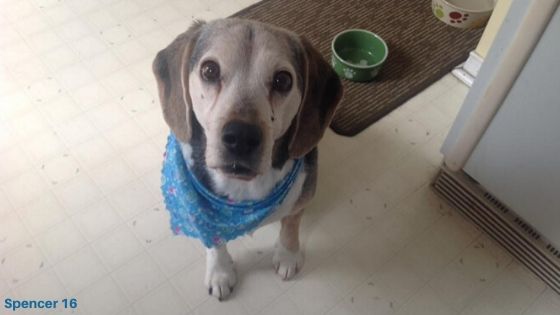
Sharing your life with a dog is expensive. Sharing it with a diabetic dog even more so. They need insulin, syringes, test strips, glucose testing and special food.
Diabetic dog food is expensive because of the extensive testing and monitoring required before it is brought to the market.
Is that really the reason?
Like many of you, I had always assumed one of the reasons prescription dog foods are expensive, is because they are sold at vet’s offices. I figured they were jacking up the price.
After all, are the ingredients really so different from food you’d find in a supermarket or pet supply store? Maybe a little more of this and a little less of that, but what else could explain the high prices?
The reason diabetic dog food is expensive
Even though I was sure I knew the answer, I decided to do some research anyway. I came across an interesting article in the Tuft’s University Cummings School of Veterinary Medicine newsletter. Although they use food for kidney disease as an example, the same argument would hold true to explain the cost of a diabetic food.
“Consider food for kidney disease. Explains Dr. Heinze, “examples of testing for kidney diets includes feeding the diets to pets with kidney disease for many months and monitoring how they do compared to pets fed more typical diets. This requires lots of bloodwork and other diagnostics.”
How can I save money on my dog’s prescription diabetic food?
Search online and compare prices
From meds to food there can be massive price differences online, compared to buying from the vet.
I don’t know where in the world you live, so the best suggestion I can make is to type diabetic dog food into your search engine. You will come up with a variety of online pet retailers to choose from. Make sure they’re reputable, and only buy food that is sealed in original packaging.
Other factors to consider
You may find the price much cheaper, but you need to factor in the cost of delivery if you’re under their minimum spend. If the food requires a prescription from your vet, include the cost of him writing one for you. Believe it or not, even with those extra charges it may still be cheaper.
Consider switching brands
If you like the idea of a diabetes specific dog food but the one you’ve been using is expensive, ask your vet if there is another brand that’s cheaper. Compare ingredients with your vet, and ask him if there is any risk if you decide to switch.

Make your diabetic dog food last longer
I understand if you’d rather not switch from something your dog is doing well on, I feel the same way. My dog was doing well on her special diet, and I shopped online to save money rather than taking the risk of her not liking the new food, or for some reason it not agreeing with her.
If you use the wet food, what about buying dry and vice versa. Yes you will end up spending a bit more initially, but I find it lasts. My dog ate wet food but when I added a bit of dry, her cans lasted longer.
Another way to make the food last longer is to add other ingredients that are safe for your diabetic dog. Doing that may also help keep a fussy dog interested because he’s getting variety in his diet.
I created a list of all the human foods that were safe for my dog to eat, and I would rotate them into her prescription diet. Please speak with your vet before you do that, to make sure that isn’t compromising the efficacy of the food.
Do diabetic dogs have to eat special food?
Dogs with diabetes need to keep their blood sugar levels as close to normal as possible. This helps keep them feeling good, and decrease the chances of developing complications associated with diabetes, like blindness for example.
Does that mean they have to eat diabetes specific food? Well, that depends on who you ask.
Some vets…
• Believe condition specific foods are best
• Say some brands of “regular” food are perfectly fine (depending on ingredients)
• Recommend a home cooked diet
• Are raw food proponents
If you would like to learn more about raw feeding, listen to this podcast I did with Dr. Ian Billinghurst. It’s very interesting and informative!
How to choose the best affordable food for your diabetic dog
Since this is all about the cost of a diabetic diet, money is a factor…but most importantly so is your dog’s health. Choosing something based on price alone could lead to expensive to treat health complications down the road.
Start with a chat to your vet about the cost of the diet. Can he help in some way? Offer any suggestions? Does he offer bulk buying for example?
Ask him what he thinks about a homemade diet, or adding some raw to his existing one. Maybe there’s a regular food sold in pet supply stores that will do. If he’s not familiar with homemade or raw or isn’t a fan, do your research. Have a chat with a canine nutritionist or integrative/holistic veterinarian. It doesn’t mean you have to commit to anything, but it’s a good way to gather information from reputable and trustworthy sources.
Please don’t make any changes to your dog’s existing diet without speaking to your regular vet first.
Inexpensive recipes for a diabetic dog
If you’re interested in home cooking and you’ve determined it’s a lot more economical, here are some recipes to have a look at. Pinterest is also a fabulous resource.
Before you start shopping show them to your vet and get his opinion. Even if he doesn’t want you to totally abandon the diabetes diet, he may be okay with reducing it a bit and adding something homemade.
“Home Cooking Recipes for Diabetic Dogs”
28 cups water
1 bag (4lbs each) chana dal rinsed (yellow bean from India)
2 bags (1lb each) brown lentils rinsed
2 bags (1 lb each) black-eyed peas rinsed
2 bags (1 lb each) green split peas rinsed
1 lb pearl barley rinsed
5 lbs boneless chicken breasts cut into ½” cubes
1 lb ground turkey
1 can (29oz) Libby’s 100% Pure Pumpkin
2 bags (16oz each) frozen broccoli cuts
2 bags (16oz each) frozen crinkle cut carrots
2 bags (16oz each) frozen green beans
2 packages (10oz each) frozen chopped spinach
Pour water into a 20-quart pot. Bring to a boil over high heat.
Add chana dal, brown lentils, black-eyed peas, green split peas and barley. Reduce heat to medium, stir occasionally. Cut and add chicken breast. Add ground turkey. Stir in pumpkin. Add in the frozen vegetables. (My pot will not accommodate all of the vegetables so I add in as much as I can and thaw the rest to be added in before storage).
Reduce heat to medium-low, stirring occasionally until most of the water is absorbed. Let stand and cool before storing. Can be frozen.
This recipe is based on a 48lb dog eating four cups of stew and one cup of dry food daily. An example for a 20lb dog would be about 1 1/2 cups of stew and roughly 1/2 cup of dry food daily.
There are 265 calories per cup.

Leave a Reply